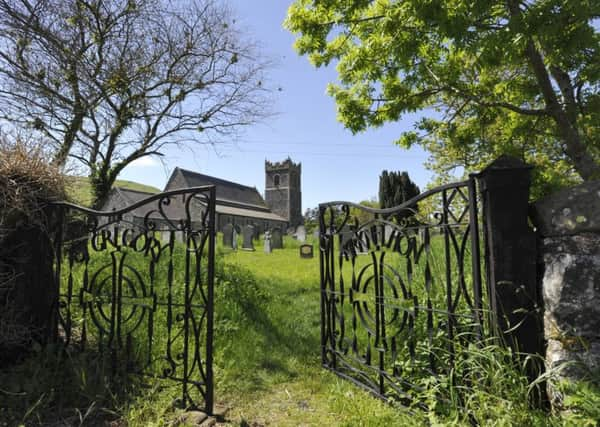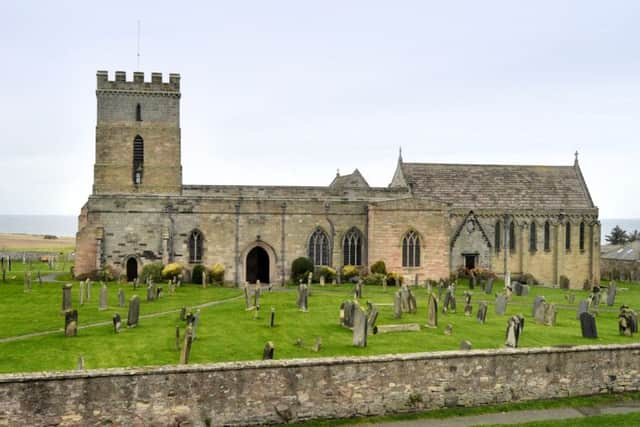Three remarkable churches are true treasures of county


That image shapes this reflection on three remarkable churches in North Northumberland and the settings within which they are found.
First of all, we make our way out of Alnwick driving to the North West.


Advertisement
Hide AdAdvertisement
Hide AdJust after the village of Eglingham, perhaps three miles on, finds you in the hamlet of Old Bewick.
It is now no more than a tiny cluster of houses on the road toward Chillingham and Chatton. Even the post office has gone.
The hills rise up toward Quarry House Moor on the East of the hamlet, with a trackway leading eventually to the ruined farmhouse at Blawearie.
You pass Old Bewick hill fort, a megalithic portal on your way. World War II pill-boxes are also scattered around.


Advertisement
Hide AdAdvertisement
Hide AdReturning to the main road and walking on a few hundred yards finds you at a junction with a sign post to Old Bewick Church. The church lies hidden at the end of a narrow lane.
Inside the tiny church you stand in a small rectangular nave, with a breathtaking apsidal (semi-circular) East end. In the semi-dome above the altar is a stunning light blue ceiling, covered with golden stars.
Although there are no written records extending back beyond 1695, archaeology and architectural history show the church to be a 12th century foundation, restored in the 13th and 14th centuries.
By the mid-19th century, the church was becoming ruinous. The then parish priest re-roofed the building and began to restore it to the attractive tranquillity it breathes today.
Advertisement
Hide AdAdvertisement
Hide AdIn the chancel is a memorial to a woman in 14th century costume, probably the work of sculptors working near Alnwick in the first half of the 14th century.
Outside in the churchyard lie the parents of the late Hugh Trevor-Roper, the distinguished historian, whose father was the GP in Glanton.
By the gate is a tiny hut, a poustinia, a place for retreat. Poustinias come from the Orthodox tradition.
Having perhaps spent an hour of silence in Old Bewick, we motor on to Kirknewton, North West of Wooler.
Advertisement
Hide AdAdvertisement
Hide AdWe pass on our left alongside another Neolithic hill fort at Yeavering Bell. On our right is the site of the ancient palace of the kings of Northumbria, Ad Gefrin. Near here, St Paulinus baptised people in the River Glen.
We also pass by the former home of Nancy Lambton (1912-2008), the redoubtable Professor of Persian at University College, London. Prof Lambton was still preaching and leading worships in nearby Doddington Church in her mid-90s.
Just before we reach the station on the old Alnwick-Coldstream line, we pull in at St Gregory’s Church.
Here is another gem, a place to relish tranquillity and silence.
Advertisement
Hide AdAdvertisement
Hide AdMost remarkable of all is a primitive relief of the Magi, dating at least to the 12th century and maybe even some three centuries older.
Rebuilt in the 15th century, the chancel is delightfully ‘tunnel-vaulted’ and there is a tiny South transept.
In the churchyard to the East of the church is the grave of the social reformer, Josephine Butler, with an interesting piece of sculpture in the porch, commissioned at the centenary of her death.
Other interesting pieces of artwork include a re-positioned reredos in the West end of the North aisle.
Advertisement
Hide AdAdvertisement
Hide AdFinally turning south again, we journey from Wooler to the coast at Bamburgh.
Finding a parking place, not always easy, we cross the road to the church from the excellent Grace Darling Museum.
The castle dominates the landscape, standing on a spur of the Great Whin Sill.
Bamburgh church is the resting place of St Aidan, the first of the Irish missionaries sent in AD 635 from the monastery on Iona at the request of King Oswald of Northumbria.
Advertisement
Hide AdAdvertisement
Hide AdLegend has it that Aidan died in the year 651, leaning against a wooden beam, which now forms part of the ceiling of the church tower. Formerly, pilgrims broke off pieces of the beam to take home as relics.
The new shrine to Aidan was dedicated by the present Archbishop of York in August 2013.
In the churchyard is a prominent grave, designed by the distinguished Victorian architect Anthony Salvin.
It marks the burial place of the heroine of Bamburgh, Grace Darling, who famously rowed out to sea to save lives from the Forfarshire, wrecked off the Farne Islands.
Advertisement
Hide AdAdvertisement
Hide AdThe grave’s prominence is such that it may be seen from the sea.
These three gems in unsurpassable settings are yet more treasures of North Northumberland, attracting visitors year by year.
They also serve to remind us of the extraordinary heritage of the ancient Kingdom of Northumbria, of which we are but the most recent custodians.